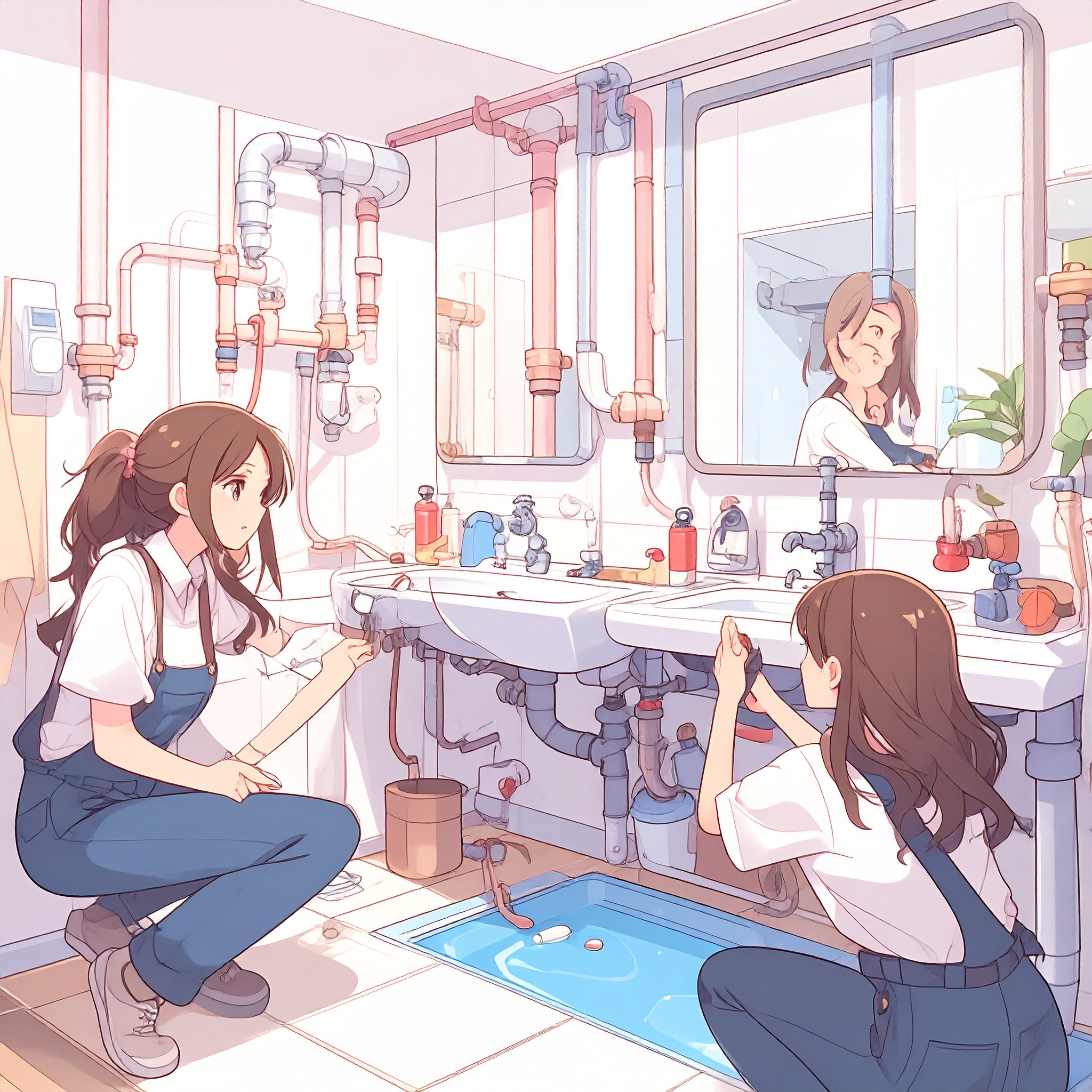In Japan’s rental properties, plumbing issues such as leaky faucets, clogged toilets, slow drains, or malfunctioning water heaters can happen to anyone. When such problems arise, tenants often find themselves uncertain about key questions: Who is responsible for the repair costs? When should I report the issue? Am I allowed to fix it myself?
These concerns are particularly relevant for foreign residents or those unfamiliar with Japan’s rental practices. Without a clear understanding of how to handle these situations, one may inadvertently bear unnecessary costs or violate the terms of the lease agreement.
This article offers practical guidance on how to determine responsibility for plumbing-related repairs and provides valuable tips to help tenants prevent disputes before they occur.
Landlord Responsibility for Wear and Tear
Under standard Japanese rental agreements, landlords are typically responsible for repairs arising from natural wear and tear of the property and its fixtures over time. These instances are categorized as “malfunctions due to age-related deterioration” and may include:
-
Water leakage from the base of a faucet that has been in use for many years
-
A water heater that suddenly stops functioning due to age
-
Persistent drainage issues caused by long-term use
-
Toilet tank parts that have worn down and no longer operate correctly
In such cases, unless the tenant is found to have caused damage through negligence or misuse, the cost of repair or replacement should be borne by the landlord or property management company. If the lease explicitly states that the landlord is responsible for the maintenance of fixtures, tenants are encouraged to report the issue promptly and request appropriate repairs.
Tenant Responsibility for Damage Caused by Misuse or Negligence
Conversely, when plumbing issues arise due to improper use or negligence on the part of the tenant, the responsibility for repair costs falls squarely on the tenant. Common examples include:
-
Flushing non-toilet paper items, leading to clogs
-
Pouring excessive oil or food waste down the kitchen drain
-
Breaking faucets or showerheads through rough handling
-
Allowing hair and debris to accumulate in the bathtub drain due to lack of cleaning, resulting in overflow
These situations are classified as “maintenance-related negligence” and are not considered the landlord’s responsibility. Even if a tenant claims that a fixture “broke naturally,” an inspection revealing misuse or neglect will typically result in the tenant being charged for repairs.
How to Respond to Emergencies
In the event of a serious plumbing issue—such as a water leak or drain backflow—immediate action is essential to prevent further damage to the property. Delayed response can result in floor deterioration or water infiltration into lower units, potentially increasing the tenant’s liability.
The standard protocol for handling such emergencies includes the following steps:
-
Shut off the main water supply valve or local water control to stop further leakage
-
Contact the property management company or landlord without delay (confirm if an after-hours emergency contact is available)
-
Take photos of the damage to document the situation, which may be useful for future reference or insurance purposes
-
If temporary repair is required, consult with the management company before contacting a service provider
It is crucial not to arrange professional repairs independently without prior authorization, as unapproved expenses may not be reimbursed. Clear communication and adherence to proper procedures are key to resolving emergencies efficiently and responsibly.
Inspecting Fixtures Upon Move-In: A Key to Preventing Future Issues
It is not uncommon to discover plumbing irregularities shortly after moving into a new residence. Issues such as a loose faucet, poor drainage in the bathroom, or a leaking connection at the washing machine tap can surface even in the most well-maintained properties.
To avoid future misunderstandings or potential liability, tenants should report any irregularities to the property management company immediately after move-in. Delayed reporting may result in the tenant being held responsible for the issue. Conducting a comprehensive inspection of all water-related fixtures on the first day is highly recommended.
Key areas to check include:
-
The opening, closing, and water pressure of kitchen and bathroom faucets
-
Toilet flushing performance and tank functionality
-
Drainage efficiency in all sinks, showers, and bathtubs
-
The water temperature control of the shower system
-
The water meter—if it moves when water is not being used, there may be a hidden leak

Reviewing the Lease and Disclosure Documents
Responsibility for repair costs is often outlined in the lease agreement or the legally mandated Important Matters Disclosure. These documents may specify whether repair obligations fall on the tenant, the landlord, or are subject to the landlord’s discretion. Special attention should be given to clauses stating that “minor repairs are the tenant’s responsibility,” and clarifying the scope of such terms during the contract signing is essential.
If water-related fixtures are formally categorized as standard equipment, the landlord is generally responsible for their maintenance and repair. However, if such fixtures are considered optional and provided free of charge, tenants may be required to cover repair or replacement costs themselves.
To avoid future misunderstandings, tenants are encouraged to ask clear and specific questions during the contract process, such as: “Who bears the cost for plumbing repairs?” and “What are the procedures in the event of an emergency?”
Preventative Maintenance: Daily Care for a Trouble-Free Experience
In rental properties, thoughtful daily care plays a key role in preventing plumbing issues. Simple yet consistent practices—such as regularly cleaning drain catchers, avoiding the disposal of foreign objects, thoroughly rinsing away cleaning agents, and wiping down water droplets from showerheads—can go a long way in maintaining functionality and minimizing the risk of malfunction.
Seasonal precautions are equally important. For example, in colder regions or during winter months, burst water pipes caused by freezing temperatures can become a serious concern. Understanding how to properly use and protect systems based on your location and property type is essential for long-term peace of mind.




